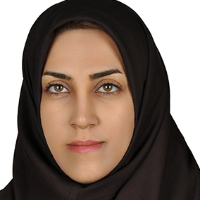Fingerprinting of sediment sources deposited in the river bed using geochemical tracers and combination model in a catchment with severe gully erosion
Accelerated soil erosion by water is an environmental threat on different continents. Suspended sediment loads in riverine systems resulting from the accelerated erosion due to human activities are a serious threat to the sustainable management of watersheds and ecosystem services therein worldwide. Identifying sediment provenance in the catchments is essential to to mitigate its negative effects consisting of on-site (e.g., decreasing soil depth and depletion of soil organic, degradation of soil structure, and etc.) and off-site effects and to help remedy problems such as eutrophication, and siltation of reservoirs. Among direct and indirect methods used to study the sediment source, sediment fingerprinting is a useful technique for determining contribution of sediment sources within a catchment like agricultural lands, rangelands, barelands, and etc. The successful application of this method reported in fluvial and aeolian environments. In this study, sediment fingerprinting method used to identify sediment sources and quantifying contribution of its sources in the Farghan Catchment in Hormozgan Province.
In this research, 38 surficial samples (0-5 cm) were collected randomly-systematic with a good distribution from the potential sources (consisting of eight samples in agricultural lands, 18 samples from gully erosion sites and 12 samples from barelands and rangelands) and six samples from sediment deposited in the bed of the river in vicinity of catchment outlet, respectively, and after samples preparation, the concentration of the geochemical elements (consisting of major elements, rare earth elements and trace elements) were measured by ICP-OES in the central laboratory of University of Hormozgan. Stepwise discriminant function (DFA) was applied to discriminate the sediment sources, and five tracers consisting of Te, Zr, Ta, Be and Na were selected as the final tracers. Finally, the relative contribution from each source was determined by mixing model.
Based on the results, the mean contribution for the agricultural lands, barelands and rangelands, and gully erosion sited were estimated 16.7, 50.6, and 32.7 %, respectively. Based on the results, a combination of Te, Zr, Ta, Be and Na were able to correctly classify 89.3% of the source sediment samples consisting of agricultural lands, gully erosion sites, barelands and rangelands. Due to high sediment rate, gully erosion sites are one of the important forms of soil erosion by water. The central parts of catchment are the most susceptible region to gully erosion because these areas are covered by lithological formations such as Bangestan, Aghajari and Mishan. Mishan lithological formation is involving the marl, limestone, and the Aghajari outcrop consists of sandstone and marl. The lands of flat plains are covered by quaternary fluvial depositions resulting from the erosion of Aghajari, Mishan and older lithological formations. Due to low slop of central parts of study area, existing young soils and without developed horizons and mismanagement of land uses, the land susceptibility to gully erosion is high in central parts.
Sediment source fingerprinting is a useful technique to investigate the origin of sediment in both windy and fluvial sedimentary environments. The estimated source proportions can help watershed engineers plan the targeting of conservation programmes for soil and water resources and due to the variability of geological units from one region to another, the type of land use management, and the type of soil units of each region, the selected trackers for each region are different, and for this reason, until now researchers are able to provide a comprehensive guide for choosing a tracker. were not optimal in all regions, and this issue is one of the main challenges of sediment fingerprinting.
- حق عضویت دریافتی صرف حمایت از نشریات عضو و نگهداری، تکمیل و توسعه مگیران میشود.
- پرداخت حق اشتراک و دانلود مقالات اجازه بازنشر آن در سایر رسانههای چاپی و دیجیتال را به کاربر نمیدهد.


